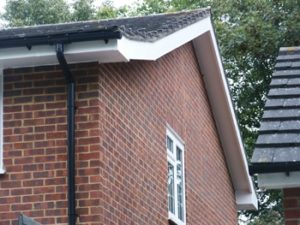
Fascia And Soffit
Add a review FollowOverview
-
Founded Date August 8, 2021
-
Sectors Financije i računovodstvo
-
Posted Jobs 0
-
Viewed 23
Company Description
See What Eaves Replacement Tricks The Celebs Are Using

The Complete Guide to Eaves Replacement
Eaves are an important part of a building’s roof. These overhanging edges serve several purposes, from directing rainwater far from the structure to improving the visual appeal of a structure. However, like any other building component, eaves can break gradually due to direct exposure to the aspects. This short article will explore the value of eaves, the signs that suggest a need for replacement, the procedure of eaves replacement, and frequently asked questions related to this subject.

Comprehending Eaves
Eaves are the part of a roofing system that overhangs the walls of a structure. They can be found in various architectural styles, and their design often depends on the structure’s overall aesthetic. The primary functions of eaves are:
-
Water Management: Eaves assist in directing rainwater away from the walls and foundation, thus preventing water damage and disintegration.
-
Protection: They protect the structure from direct sunshine, which can assist in decreasing cooling expenses in warmer climates.
-
Aesthetic Appeal: Eaves contribute significantly to the architectural design and appeal of a building.
Kinds of Eaves
There are mainly 2 types of eaves: Open Eaves and Closed Eaves.
-
Open Eaves: These have exposed rafters or beams and provide a rustic look. They are easy to preserve however might require more attention to prevent water damage.
-
Closed Eaves: These are completed with a soffit and fascia, creating a cleaner appearance. They frequently are better at hiding necessary parts, such as ventilation systems.
| Feature | Open Eaves | Closed Eaves |
|---|---|---|
| Visual Appeal | Rustic | Clean |
| Maintenance Ease | Much easier | More Complex |
| Defense Level | Moderate | High |
Signs That Your Eaves Need Replacement
It is important to inspect eaves regularly to guarantee they remain in excellent condition. Some signs that suggest a requirement for eaves replacement include:
-
Visible Damage: Cracks, holes, or considerable wear are clear indicators that your eaves may require replacement.
-
Water Stains: If you see water spots on interior walls or ceilings, it could suggest that water is not being adequately directed away.
-
Sagging or Drooping: Eaves that droop or sag may suggest structural failure or heavy water build-up.
-
Rotting Wood: Wood eaves are prone to rot. If the wood feels soft or reveals signs of decay, replacement is essential.
-
Insect Infestation: Evidence of bugs like ants or termites can be an indication of instability in the eaves and hence a requirement for replacement.
The Eaves Replacement Process
Replacing eaves can be a labor-intensive job, frequently needing professional help. Below is a detailed process of how eaves are typically replaced:
-
Assessment: Identify damage and figure out the kind of eaves that need to be replaced.
-
Elimination: Carefully get rid of the existing eaves. This may involve cutting nails or screws and guaranteeing that contributing structures are not damaged.
-
Preparation: Inspect and repair any damage to the underlying structures, such as fascia boards.
-
Installation: Install the new eaves. This involves attaching them safely to guarantee avoid future concerns.
-
Ending up Touches: After installation, painting or sealing the eaves may be required to protect versus the components.
-
Examination: Carry out a last evaluation to ensure that everything has been installed correctly which there are no leaks.
Maintenance Tips for Eaves
Once the new eaves are set up, it is important to keep them well-maintained. Here are some tips:
- Regularly tidy gutters to prevent obstructions.
- Check eaves after heavy storms for any damage.
- Paint or seal wood eaves every 3-5 years to avoid rot.
FAQs About Eaves Replacement
Q1: How long does it usually take to replace eaves?A: The period depends on the size of the job and complexity however can vary from a couple of hours to a number of days.
Q2: Can I replace eaves myself?A: DIY replacement is possible for those with the right skills and tools. Nevertheless, employing professionals is a good idea for safety and performance, especially for complex structures. Q3: What products are frequently utilized for eaves?A: Eaves can
be made of different materials, consisting of wood, vinyl,
aluminum, and fiber cement. The choice typically depends on the building’s style and environmental conditions. Q4: How much does eaves replacement usually cost?A: Costs differ considerably based on place, materials chosen, and labor charges, generally ranging
from ₤ 100 to ₤ 300 per linear foot for installation. Q5: Can I alter the style of my eaves?A: Yes, eaves can be replaced with a various design throughout the replacement process, enabling homeowners to enhance their building’s aesthetic appeals. Eaves play an important role in protecting a structure and improving its appearance. Regular examinations and timely replacements are imperative to keep both performance and visual appeals. While eaves replacement can be a daunting task, understanding the procedure and knowing when to take action can make it more workable. Interested homeowners must speak with specialists to make sure an effective replacement process customized to their specific needs.